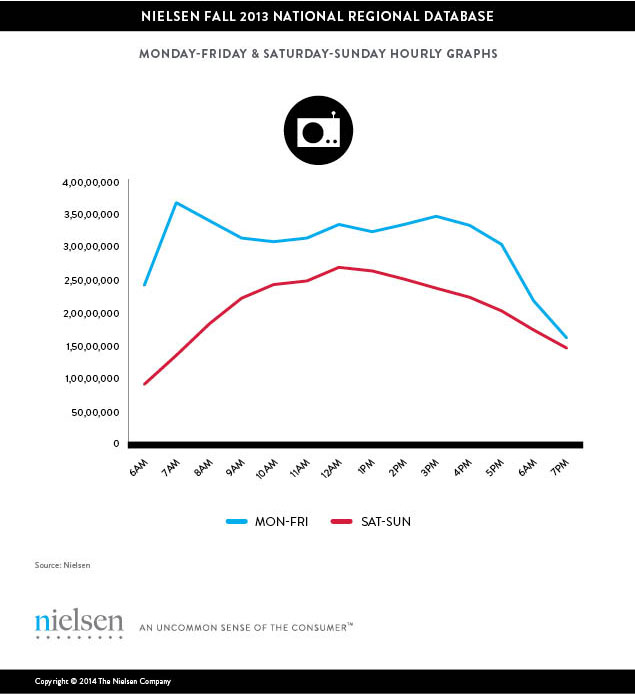Radio listeners come in all varieties, and so do their listening preferences. We know that listeners tune in at different times during the day, but we also know they tune in for different reasons. So a big part of radio programming involves determining how to cater to the broader audience while still focusing on core listeners. Approaching these types of questions, however, don’t need to be that complicated, especially when you start to understand how your listening audience ebbs and flows over the course of the day.
Chances are, no matter what market your station is in, listening peaks at certain times and slows at others. These highs and lows are mostly shaped by consumer habits and lifestyles. For example, the relationship between employment—being away from the home—and radio listening is very important. According to the latest Nielsen Audio Today report, more than two-thirds of the weekly radio audience works full time and tunes in when they’re away from home. And that means that people’s work schedules are significant drivers of the hourly flow of listening throughout the day.
Myriad factors contribute to the audience curve for radio listening: the daily commute, at-work listening, lunch break tune-in, weekend errands on Saturdays and Sundays, and many more. The overall audience curve is based on the national average quarter-hour (AQH) audience for listeners 12 and older. The two curves in the graphic below are from Nielsen’s National Regional Database for fall 2013.

During the work week, 7 AM is the top hour for national radio listening, followed by 3 PM and noon, and the curve’s angled peaks highlight spikes during these key periods. The curve for weekend listening, on the other hand, is much more rounded, showing how the audience builds gradually until the mid-day peak and then begins to drop off at the same rate it grew.
For radio programmers, understanding the national graph and any local variations couldn’t be more important from a scheduling perspective. From making sure the morning team schedules its best material when listening is peaking to moving less-mainstream content to times when listenership dips to minimize risk, understanding your audience’s daily habits can help maximize your ratings.



